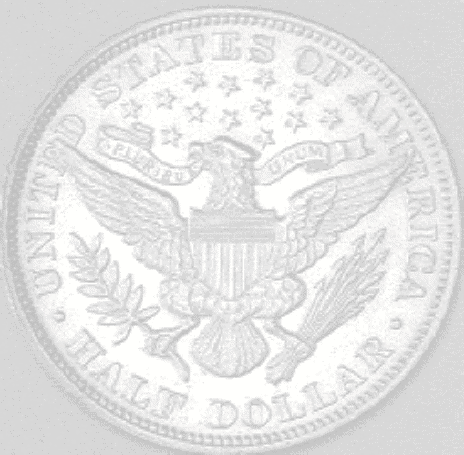
|
|
||
|
|
|
|
|
|
||

-13-
FOR BETTER OR WORSE:
"Shinplasters"
Since the suspension of specie payments for currency in 1861, coins were hoarded. Merchants either charged to make change for paper "money" or altogether refused to give change. In Hartford, Connecticut, 20,000 "dollars" in state bank notes was halved and quartered for use as change. Many merchants began printing their own fractional currency, or paper change. Public contempt for them can be seen by the name that they attached to them: they were called "shinplasters." Merchants often refused to recognize the paper issued by another merchant. State laws prohibited the practice, but banks themselves got into the act. In order to protect their citizens against unreliable paper, many municipalities issued their own fractional currency.
Postage Stamps
In New York City, the daily
sale of postage stamps rose from 3000 "dollars" to 16,000 "dollars."
President Abraham Lincoln signed an act authorizing the Treasury to use
stamps in lieu of the shortage of coinage. By the same act, he
prohibited the private sector from further issuing fractional currency.
Stamps posed a real problem: the gum on their reverse
easily soiled and tore. Some companies therefore printed small envelopes
stating the sum of stamps inside. But Americans are well -known for
their ingenuity. John Gault, a Boston sewing machine salesman designed a
brass case to house a stamp, and sealed it behind the transparent
protection of eisenglass, or mica. He patented his idea on August 12,
1862. These "encased postage stamps" carried advertisements on the
reverse of the metal planchet. Over 30 kinds are known, When the post
office refused to provide enough stamps for use as currency, the
manufacture of the metal cases ceased, and after operating only 2
months. The government had its own plans!
Fractional Currency
Congress authorized the printing of 50,000,000 "dollars" in fractional currency called "Postage Currency." The first issue was printed between August 21, 1862 and May 27, 1863. A Second issue was circulated between October 10, 1863 and February 23, 1867. Then followed a Third issue from December 5, 1864 to August 16, 1869. The Fourth and last issue was printed in 1876. A total of 368,720,079.45 "dollars" was issued. And, like the private issues of fractional currency, these too were known as "shinplasters."
The Three Cent Piece
The silver 3 cent coin was guardedly minted, and hoarded whenever available. There-for the 3-cent currency made it possible to obtain 3-cent stamps. But in 1865, the nickel 3-cent coin halted the printing of the paper note. The reduced content value made it undesirable to hoard, but neither were people receiving the 3-cent value the coins purported to have.
Tokens
The only coin that had not been
replaced by paper "money" in 1862 was the cent. On account of its every
day use it was doubled in mintage. The number coined annually rose from
28,000,000 to 49,000,000. The cents contained 88 percent copper and 12
percent nickel, but because nickel was at the time very desirable, the
cents were either hoarded, or melted: they vanished from circulation.
Merchants needing a coin cent began issuing
tokens. Most were struck in copper and became known as "copperheads.”
They were for the most part struck on hand screw presses. While they
first appeared in Cincinnati, Ohio, they soon flooded the country. They
were accepted everywhere as a cent. More than 20,000,000 were struck
during the War years, and about 9300 varieties are known.
They were basically of 2 types, About 1300 "Patriotic"
tokens are known, These carried a patriotic design or slogan on both
sides. "Storecard" tokens number about 8000 varieties. These carried
advertisements of either a store or a product.
In 1864, Congress changed the content of the cent to
bronze, and introduced the 2-cent coin. The reduced content made it of
less value than what it professed to have, and in an attempt to make
them acceptable to the people, Congress passed a law prohibiting private
issues of "money."
